Mechanism of High-Speed Train Crosswind Overturning Stability Based on Frequency Domain Analysis
-
摘要:
侧风作用下列车的动态环境以轮轨相互作用为主向,以空气动力作用为主演变,列车的侧风倾覆行为成为威胁列车行车安全性的主要诱因. 首先,采用精细化车-轨耦合模型开展列车侧风倾覆的频域特性分析,以明确侧风倾覆响应对列车模型的敏感性;基于考虑模态特性的频域分析框架,推导脉动风及轨道不平顺与列车倾覆动力响应间的传递函数,结合相应参数进行分析,以直观揭示列车的侧风倾覆机理. 结果表明:列车倾覆行为受绕车体下心侧滚模态和车体沉浮模态控制影响,其风荷载影响要明显大于轨道不平顺;在轨道不平顺激励下,第一阶模态贡献主要由轨向不平顺引起,第二阶模态贡献主要由高低不平顺引起,在脉动风荷载激励下,其顺风向脉动风分量起主要贡献;车速、风速和风向角的增大都会引起列车动力响应的增大,进而降低列车安全运营时的最大允许风速;失效概率的增大会降低动力响应的极值,进而提高安全运营风速.
Abstract:The dominant factor impacting the dynamic performance of a train under a crosswind changes from wheel-rail interactions to the aerodynamic force, making the crosswind overturning risk the main threat to safe train operation. This study first analyzes the train overturning stability using a refined coupling model to reveal its sensitivity to the train model. On the basis of a frequency domain framework accounting for the modal characteristic, transfer functions between the wind turbulence and track irregularities and the overturning responses are derived. The mechanism of train crosswind overturning is then intuitively interpreted via a parameter analysis. The results show that the overturning behavior of a train is controlled by the rolling mode around the lower center of the car body and the floating mode of the car body and that the influence of the wind load is significantly greater than that of track irregularities. Under track irregularity excitation, the first modal response primarily arises from the alignment component, while the second modal response arises from the vertical component. Under a wind load, the longitudinal fluctuating wind component plays a major role. Increasing the train speed, wind velocity, and wind direction angle increases the dynamic response of the train and reduces the maximum allowable wind speed to safely run the train. An increase in the failure probability can reduce extreme responses and increase the wind speed for safe operation.
-
Key words:
- wind effects /
- high-speed train /
- overturning risk /
- frequency domain analysis /
- analytical models
-
近年来,随着高速列车逐步向轻质化和高速化发展,侧风作用下列车的动态环境由以轮轨相互作用为主向以空气动力作用为主演变,列车的侧风倾覆行为成为威胁列车行车安全性的主要诱因. 国内外相继出现过大量由大风引起的列车倾覆事故,如2002年奥地利单节动车组通过曲线时的侧风倾覆事故[1]、2005年日本的“稻穗14号”新干线列车倾覆事故[2]及2007年乌鲁木齐的5806次列车倾覆事故[3]等. 列车倾覆事故的发生,不仅影响高速列车正常运营,严重时还会引起人员伤亡和财产损失. 由大风天气引起的列车安全事故表明,强风对高速列车的影响不容忽视. 车辆的全天候、准点及安全运行等特点在快节奏的现代社会中显得尤为突出,因此,研究高速列车风致振动及行车安全性非常必要.
列车的倾覆通常定义为轮重减载量和静轮重的比值,即轮重减载率超过规定限值. 在欧洲,轮重减载率的限值为0.9,中国则较保守地取0.8[4]. 同时,研究指出,瞬时的轮重减载率超标并不会立刻引发倾覆事故,如Yu等[5-6] 采用低通滤波器去除轮重减载率时程曲线中高于2 Hz的响应成分,以评估列车的倾覆危险性. 为简化列车的侧风倾覆评估过程,国内外诸多学者提出了分析框架及分析模型:日本提出的国枝式[7],其分析过程采用静态平衡方程,公式中综合计入了列车的重力、风荷载、运行状态下列车左右振动惯性力及通过曲线时的离心力;高广军[8]则根据准静力矩平衡建立了车体在转向架上倾覆和车辆在轨道上倾覆的力矩平衡方程式,同时给出了相应的侧风倾覆计算办法;Baker[9]在研究中引入了3刚体的简化列车模型,通过建立列车倾覆力矩系数与风向角之间的关系式,对悬挂系统、轨道曲率和导纳函数等影响因素开展了倾覆动力响应分析. 通常而言,通过轮重减载率可以判断在特定行车速度及风速下是否发生倾覆,进而获取特征风速曲线或概率特征风速曲线,对行车速度进行控制,以确保列车侧风倾覆稳定性[10].
上述建立的列车侧风倾覆分析方法并未充分地考虑列车的动力特性,无法准确地估计列车轮轨接触力的极值. 对高速移动列车而言,外部激励的随机性(如轨道不平顺和脉动风荷载)及列车的自身参数和气动参数都会对列车的侧风倾覆稳定性产生不同程度的影响. 若基于传统的时域分析方法,开展精细化的车-轨耦合模型分析,存在计算工况繁多、效率低下的问题,同时也不易于直观地反映列车的侧风倾覆机理及辨别主要影响因素. 基于上述考虑,Yan等[11]建立了列车倾覆响应的频域分析框架;结合移动列车脉动风速谱解析模型及模态分析,Wang等[12]进一步简化了上述分析框架,并获取了特性条件下列车安全运营的概率特征风速曲线.
基于前述的研究工作,首先采用精细化的车-轨耦合模型,开展列车的侧风倾覆动力响应评估,以辨别列车系统的频域响应特性;其次,基于倾覆动力响应频域解析模型,进一步推导脉动风荷载及轨道不平顺各分量与列车倾覆响应间的传递函数,通过开展参数化分析,探讨列车的侧风倾覆机理,以明确列车侧风倾覆安全性的主要控制因素及其影响规律,为侧风环境下高速列车安全运营管理提供理论基础及技术支撑.
1. 列车-轨道耦合系统
1.1 精细化车-轨耦合系统模型
1) 35自由度(DOFs)列车模型
在车辆模型的建立方法层面,通常将列车视为多刚体系统,运用D’Alembert原理或者Lagrange方程等方法推导车辆各刚体的运动方程,以实现列车动力响应的求解. 机车车辆模型可分为车体、构架及轮对7个刚体,其中,车体和转向架的自由度选择在各研究工作中较为一致,均考虑了横摆、浮沉、侧滚、点头及摇头5个自由度;但针对分析问题的不同,在轮对自由度的选择上相差较大. 本文为详尽考虑列车模型的精细化,同样考虑轮对的5个自由度,因此,列车共有35个自由度,其模型如图1所示,图中:Kpy、Kpz和Kty、Ktz分别为一系和二系悬挂系统的横、竖向刚度;Cpy、Cpz和Cty、Ctz分别为一系和二系悬挂系统的横、竖向阻尼;Hcb、Hbt及Htw分别为车体质心与摇枕质心、摇枕质心与转向架质心及转向架质心与轮对质心间的距离;2d为轴箱横向间距;yc、zc、ϕc、ψc及βc分别为车体的横摆、浮沉、侧滚、点头及摇头自由度.
2) 轮轨接触关系
列车-轨道作为动态相互作用的耦合系统,其轮轨接触关系是二者之间的联系纽带. 轮轨接触关系由几何关系和力学耦合关系构成,其中力学耦合关系包括轮轨法向力和蠕滑力.
轮轨接触几何关系是准确计算轮轨法向力和蠕滑力的重要前提和基础,本文采用王开文[13]提出的一种求解轮轨空间接触的一维搜索算法来确定轮轨空间接触点的迹线;采用Hertz非线性弹性接触理论计算(轮轨法向力),选择Kalker的线性蠕滑理论计算轮轨蠕滑力,同时考虑到车辆运行中,轮轨间蠕滑有可能达到饱和,采用Shen-Hedrick-Elkins理论进行非线性修正,从而适应轮轨相互作用实际工况的仿真计算[4].
1.2 简化分析模型
在侧风作用下,列车倾覆与否取决于轮重减载量是否超过一定限值,同时考虑到实际列车倾覆行为的发生通常需要轮重减载量超限并保持一定的时长,即瞬时的轮重减载量超限并不会诱发列车倾覆,相关研究也指出列车倾覆的发生通常需要1~3 s的时长[9],其倾覆行为属于低频现象. 为此,国内外学者在开展列车侧风倾覆行为分析时通常会对列车的响应时程进行1~3 s的“移动平均”滤波处理,或是使用2 Hz低通滤波器剔除响应中的高频成分. 值得注意的是,上述处理过程实际上排除了由轨道不平顺高频成分及列车高频振动引起的动力响应,使得轨道不平顺对列车倾覆模态的贡献进一步减小,而以低频特性为主的风荷载则成为主要的外部激励源[14]. 也正是基于上述考虑,国内外学者在开展列车侧风倾覆行为分析时,简化列车模型或者忽略轨道不平顺的影响:Carrarini[14]在研究中指出侧风作用下列车轮重减载量对轮轨接触关系并不敏感;文献[15]忽略了轨道不平顺的影响,提出了一种基于等效阵风曲线的计算方法,以评价列车在侧风作用下的倾覆行为;Diedrichs等[16]同样忽略轨道不平顺的影响,分别采用15 DOFs的简化列车模型建立了评价列车倾覆问题的准静态模型.
综合上述研究发现,列车的侧风倾覆问题属于低频动力响应,由复杂轮轨关系及车体模型获取的高频响应成分不会计入到列车的侧风倾覆评估中,因此,可以考虑采用简化的列车模型及轮轨接触关系来开展侧风作用下列车的倾覆危险性评估. 基于分析结果及上述研究工作引入简化的列车模型,为后续列车侧风倾覆机理分析确立高效的分析模型. 在35 DOFs精细化列车模型中,若忽略轮对的自由度,可以得到15 DOFs的简化车辆模型,保持其他列车参数不变;同时,轮轨接触关系简化为密贴轮轨关系,此时,轮对的横向、垂向及侧滚位移将由轨道不平顺直接决定.
列车系统的运动方程为
{{\boldsymbol{M}}_{\rm{v}}}{\ddot{\boldsymbol{Y}} _{\rm{v}}}(t) + {{\boldsymbol{C}}_{\rm{v}}}{\dot {\boldsymbol{Y}} _{\rm{v}}}(t) + {{\boldsymbol{K}}_{\rm{v}}}{{\boldsymbol{Y}}_{\rm{v}}}(t) = {{\boldsymbol{P}}_{{\rm{wv}}}}(t) + {{\boldsymbol{P}}_{{\rm{tv}}}}(t), (1) 式中:{M_{\rm{v}}}、{{\boldsymbol{C}}_{\rm{v}}}和{{\boldsymbol{K}}_{\rm{v}}}分别为列车系统的质量、阻尼及刚度矩阵;{{{\boldsymbol{Y}}} _{\rm{v}}}(t)为时刻t列车的位移矢量;{{\boldsymbol{P}}_{{\rm{wv}}}}(t)为作用在列车车体上的风荷载;{{\boldsymbol{P}}_{{\rm{tv}}}}(t) 为作用在转向架上的轨道不平顺激励,由轨道不平顺引起的轮对位移和第一悬挂系统确定[10].
2. 列车系统响应频域特性分析
对列车而言,主要的外部激励为轨道不平顺及风荷载. 轨道不平顺通常可视为具有零均值的平稳高斯分布随机过程;风荷载由平均风和脉动风组成,其中脉动风同样可以视为平稳高斯分布随机过程. 因此,在随机轨道不平顺和脉动风荷载激励下,列车的动力响应将服从平稳高斯分布.
2.1 外部激励
1) 风荷载
风荷载的确定同时取决于列车气动特性及风场模拟. 列车气动力参数采用文献[10]中风洞试验测试结果. 采用谱分解法模拟随机风场,风谱采用IEC (international electrotechnical commission)推荐的Kaimal谱,其中,相干函数为Davenport相干函数(衰减因子{C_{\rm{u}}}=7),其表达式和参数设置分布如式(2)所示.
\left\{\begin{array}{*{20}{l}} \dfrac{{f{S_\xi }(f)}}{{\sigma _\xi ^2}} = \dfrac{{4\left( {\dfrac{{f{L_\xi }}}{U}} \right)}}{{{{\left( {1 + 6\left( {\dfrac{{f{L_\xi }}}{U}} \right)} \right)}^{\tfrac{5}{3}}}}},\\ {{\rm{Coh}}_\xi }\left( {\Delta y,f} \right) = \exp \left( { - \dfrac{{f{C_\xi }\left| {\Delta y} \right|}}{U}} \right), \end{array}\right. (2) 式中:U为平均风速;{S_\xi }(f)、{{\rm{Coh}}_\xi }(\Delta y,f)、{\sigma _\xi }和{L_\xi }分别为脉动风不同分量的功率谱密度、相干函数、标准差及紊流积分尺度,其中,\Delta y为不同点的间距,f为频率,\xi {\text{=}}{\rm{u}}{\text{,}}{\rm{v}}{\text{,}}{\rm{w}},分别代表脉动风的顺风向、横风向及竖向分量;C_\xi 为3个分量方向的衰减因子.
本例中,设定顺风向紊流积分尺度{L_{{{\rm{u}}}}} = 40,紊流强度{I_{{{\rm{u}}}}} = {\sigma _{{{\rm{u}}}}}/U = 0.17. 模拟地面脉动风时程长度为2000 m,模拟点间距为4 m,平均风速U=25 m/s,车速Vtr =100 km/h. 作用在列车车体的风速时程曲线(如图2中红线所示)可以根据移动列车与地面风速模拟点间的时空关系通过插值获取.
2) 轨道不平顺
基于逆傅里叶变换的方法,采用德国低干扰轨道不平顺谱模拟轨道不平顺,模拟时取最短波长为0.5 m,最大波长为300.0 m. 方向轨道不平顺{S_{\rm{a}}(f)}、高低轨道不平顺{S_{\rm{h}}(f)}和水平不平顺{S _{\rm{c}}(f)}的模拟结果如图3所示.
2.2 列车侧风倾覆稳定性分析
以CRH3型高速铁路列车为例,采用前述精细化车-轨耦合系统模型分析列车在轨道不平顺及脉动风荷载作用下列车动力响应. 因列车的侧风倾覆主要取决于轮重减载率中的低频成分,因此,本文分析主要聚焦于轮轨垂向接触力及车体加速度响应.
1) 轮轨垂向接触力
图4为列车以200、250、300 km/h速度通行时,轨道不平顺及脉动风荷载激励下的轮轨垂向接触力功率谱密度 (PSD)与频率f的曲线. 从图中可以看出:在低频阶段,列车的轮轨垂向接触力功率谱密度主要集中在1.00 Hz范围内,而这一频率范围由列车车体振动引起,由转向架及轮对引起的中高频成分不会对列车的倾覆行为有明显的贡献;脉动风激励下的功率谱密度明显大于轨道不平顺激励下的功率谱密度,对列车的侧风倾覆行为而言,风荷载的作用明显大于轨道不平顺. 该分析说明了文献[14-16]中采用简化列车模型开展列车侧风倾覆分析的合理性.
2) 列车车体响应
图5分别展示了车体的横、竖向加速度响应功率谱密度函数. 其中,车体的横向加速度主要由两阶模态控制,其竖向加速度主要由车体的一阶模态控制. 结合图4可以看出,轮轨垂向接触力的两阶控制模态中,其第一阶对应图5(a)中车体横向加速度的主要控制模态,而第二阶对应图5(b)中车体竖向加速度的主要控制模态. 简言之,列车侧风倾覆动力响应主要受车体的横向振动控制模态及竖向振动控制模态影响.
2.3 列车侧风倾覆控制模态
为确定列车侧风倾覆危险性的主要车体振动模态,对列车进行了模态分析. 列车车体的自振频率及振型特性列于表1. 从表中可以看出:车体横向主要振动模态主要为绕车体下心侧滚(0.54 Hz)及绕车体上心侧滚(1.20 Hz);竖向振动的控制模态主要为车体沉浮(0.94 Hz). 对照图4可以得到,列车侧风倾覆的控制模态为频率0.54 Hz的绕车体下心侧滚模态和频率0.94 Hz的车体沉浮模态.
表 1 车体自振特性及振型描述Table 1. Natural frequencies and modes of carbody阶数 频率/Hz 振型描述 1 0.54 绕车体下心侧滚 2 0.86 车体摇头 3 0.94 车体沉浮 4 1.12 车体点头 5 1.20 绕车体上心侧滚 3. 列车侧风倾覆频域分析方法
文献[10]针对列车的侧风倾覆安全性问题,采用15 DOFs的简化列车模型提出了对应的频域分析方法,同时发现简化的列车模型可以反映列车倾覆的两阶控制模态. 其分析过程首先通过移动列车脉动风速谱建立了车体的脉动风荷载谱,结合列车的频响函数求得列车的响应谱及响应统计特性,并结合随机过程极值理论求得峰值因子,最后获取了列车在指定失效概率下的轮轨垂向接触力极值. 文献[12]通过推导移动列车风速谱的解析表达式,简化了风荷载的频域求解方法. 同时,考虑到列车的侧风倾覆危险性主要受2种振动模式控制,在频域分析方法中,引入了列车控制模态以求解列车的总体响应及轮轨垂向力响应.
在频域中,列车的运动方程可表示为
\begin{split} &\bigl[ { - {{\boldsymbol{M}}_{\rm{v}}}{{(2{\text{π}} f)}^2} + {{\boldsymbol{C}}_{\rm{v}}}{\rm{i}}2{\text{π}} f + {{\boldsymbol{K}}_{\rm{v}}}} \bigl]{\boldsymbol{Y}}(f) = \\ &\quad {{\boldsymbol{P}}_{\rm{w}}}(f) + {{\boldsymbol{P}}_{\rm{t}}}(f) , \\ \end{split} (3) 式中: {\boldsymbol{Y}}(f) 为频域内的列车响应, {{\boldsymbol{P}}_{\rm{w}}}(f) 、 {{\boldsymbol{P}}_{\rm{t}}}(f) 分别为频域内的脉动风荷载及轨道不平顺荷载.
列车第j阶模态的响应谱为
{S}_{{\boldsymbol{Y}}_j}(f) = {H_j}(f)\left[ {{S _{{{\boldsymbol{P}}_{j\rm{w}}}}}(f) + {S _{{{\boldsymbol{P}}_{j\rm{t}}}}}(f)} \right]{H^*_j}(f) \text{,} (4) 式中: {S}_{{\boldsymbol{Y}}_j}(f) 为列车第j阶模态的响应谱[10];{S _{{{\boldsymbol{P}}_{j\rm{w}}}}}(f)为第j阶模态的脉动风荷载谱;{S _{{{\boldsymbol{P}}_{j\rm{t}}}}}(f)为第j阶模态的轨道不平顺荷载激励谱[10]; {H_j}(f) 和{H^*_j}(f)分别为车辆系统响应传递函数及其转置函数,如式(5).
{H_j}(f) = \frac{1}{{{m_j}{{\left( {2{\text{π}} {f_j}} \right)}^2}\left[ {1 - {{\left( {f/{f_j}} \right)}^2} + 2{\rm{i}}\left( {f/{f_j}} \right)} \right]}} \text{,} (5) 式中:{m_j}、 {f_j} 分别为第j阶模态质量、频率.
由于脉动风和不平顺的响应间不存在相关性,因此,列车第j阶模态的响应均方差为
\displaystyle \sigma _{{{\boldsymbol{Y}}}_j}^2 = \sigma _{{{\boldsymbol{Y}}}_{j{\rm{t}}}}^{\text{2}} + \sigma _{{{{\boldsymbol{Y}}}}_{j{\rm{w}}}}^2 , (6) 式中:\displaystyle{\sigma _{{{\boldsymbol{Y}}}_{j{\text{t}}}}}为轨道不平顺对第j阶广义位移的贡献, \sigma _{{{\boldsymbol{Y}}}_{j\text{w}}}^2为第j阶模态车体的响应方差.
在获取车体各阶模态响应后,列车的总体响应 {\sigma _{{{\boldsymbol{Y}}}}} 可通过SRSS (square root of sum of squares)法进行计算,如式(7)所示.
{\sigma _{{{\boldsymbol{Y}}}}} = {\left( {\sum\limits_j {\sigma _{{{\boldsymbol{Y}}_j}}^2} } \right)^{{1 \mathord{\left/ {\vphantom {1 2}} \right. } 2}}}\;\;\; . (7) 在获取列车的某模态总体响应后,基于文献[17]中模态伪惯性力的概念,采用静力求解方法获取列车的任意响应,其极值响应可根据文献[10]中的高斯平稳累计分布确定极值因子后获取,此处不再赘述.
3.1 轨道不平顺激励下模态频响函数及响应函数
在15 DOFs简化模型中,轮轨关系简化为密贴的接触状态,因此,轮对的位移可由轨道不平顺直接决定. 轨道不平顺激励将通过轮对传递并最终作用在转向架上,因此,轨道不平顺激励可由轨道不平顺和第一悬挂系统特性共同确定. 通过推导给出了轨道不平顺对第j阶广义位移的贡献{\sigma _{{\boldsymbol{Y}}_{jt}}}{\rm{t}},如式(8).
\begin{split} &\sigma _{{{{\boldsymbol{Y}}}}_{j{\rm{t}}}}^{\text{2}} = \int_0^\infty \left( {S_{\text{a}}}(f){\left| {{H_{j{\text{a}}}}(f)} \right|^2} + {S_{\rm{h}}}(f){\left| {{H_{j{\text{h}}}}(f)} \right|^2} + \right. \\ &\quad \left.{S_{\text{c}}}(f){\left| {{H_{j{\rm{c}}}}(f)} \right|^2} \right){\rm{d}}f, \end{split} (8) 式中: {H_{j{\text{a}}}}(f) 为轨向不平顺频响函数,{H_{j{\text{h}}}}(f)为高低不平顺频响函数, {H_{j{\rm{c}}}}(f) 为水平不平顺频响函数,如式(9).
\left\{ \begin{aligned} {H_{j{\text{a}}}}(f) =& \frac{{8{K_{{\text{p}}y}}\left( {{y_{j{\text{t}}}} - {H_{{\text{tw}}}}{\phi _{j{\text{t}}}}} \right) + 4{K_{{\text{p}}{\textit{z}}}}{d^2}{\phi _{j{\text{t}}}}{\lambda \mathord{\left/ {\vphantom {\lambda {{l_0}}}} \right. } {{l_0}}}}}{{{m_j}{{\left( {2{\text{π}} {f_j}} \right)}^2}\left[ {1 - {{\left( {\dfrac{f}{{{f_j}}}} \right)}^2} + 2{\rm{i}}{\zeta _j} {\dfrac{f}{{{f_j}}}} } \right]}},\\ {H_{j{\text{h}}}}(f) =& \frac{{8{K_{{\text{p}}{\textit{z}}}}{{\textit{z}}_{j{\text{t}}}}}}{{{m_j}{{\left( {2{\text{π}} {f_j}} \right)}^2}\left[ {1 - {{\left( {\dfrac{f}{{{f_j}}}} \right)}^2} + 2{\rm{i}}{\zeta _j} {\dfrac{f}{{{f_j}}}} } \right]}} ,\\ {H_{j{\rm{c}}}}(f) =& \frac{{4{K_{{\text{p}}{\textit{z}}}}{\phi _{j{\text{t}}}}{{{d^2}} / {{l_0}}}}}{{{m_j}{{\left( {2{\text{π}} {f_j}} \right)}^2}\left[ {1 - {{\left( {\dfrac{f}{{{f_j}}}} \right)}^2} + 2{\rm{i}}{\zeta _j} {\dfrac{f}{{{f_j}}}} } \right]}} ,\end{aligned}\right. (9) 式中: {\zeta _j} 为第j阶模态的阻尼, {y_{j{\text{t}}}} 、 {{\textit{z}}_{j{\text{t}}}} 及 {\phi _{j{\text{t}}}} 分别为第j阶振型中转向架对应的横、竖向及侧滚广义坐标,{l_0}为标准轨距的一半.
3.2 脉动风激励下模态频响函数及响应函数
Baker[9]指出,车辆的倾覆与以背风侧轮对计算所得侧倾力矩直接相关,该力矩是侧向力、升力和绕车身轴线的扭转力矩的合力,而车身的扭转力矩通常很小,可以忽略不计,因此,只考虑侧向力和升力对列车倾覆的影响. 第j阶模态的脉动风荷载谱可以表示为
{S _{{{{{\boldsymbol{P}}}}_{j{\rm{w}}}}}}(f) = y_{j{\rm{c}}}^2{S _{{{{{\boldsymbol{P}}}}_{{\rm{ws}}}}}}(f) + {\textit{z}}_{j{\rm{c}}}^2{S _{{{\boldsymbol{P}}_{{\rm{wl}}}}}}(f), (10) 式中:{y_{j{\text{c}}}}和{{\textit{z}}_{j{\text{c}}}}分别为列车第j阶模态中车体横向和垂向自由度所对应的振型坐标,{S _{{{{{\boldsymbol{P}}}}_{{\rm{ws}}}}}}(f)和{S _{{{{{\boldsymbol{P}}}}_{{\rm{wl}}}}}}(f)分别为侧向力和升力荷载谱.
式(10)还可表示为
\begin{split} & {S_{{{\boldsymbol{P}}_{j{\rm{w}}}}}}(f) = {(0.5\rho {V_{\rm{R}}}A)^2}\left[ \left( y_{j{\rm{c}}}^2C_{{S_{{\rm{u}}}}}^2(\beta)\chi _{{S_{\rm{u}}}}^2(f) +\right.\right.\\ &\left. {{\textit{z}}_{j{\rm{c}}}^2C_{{L_{\rm{u}}}}^2(\beta )\chi _{{L_{\rm{u}}}}^2(f)} \right) \times {S_{{\rm{us}}}}(f) + \left( {y_{j{\rm{c}}}^2C_{{S_{\rm{w}}}}^2(\beta )\chi _{{S_{\rm{w}}}}^2(f) + } \right.\\ &\left. {\left. {{\textit{z}}_{j{\rm{c}}}^2C_{{L_{\rm{w}}}}^2(\beta )\chi _{{L_{\rm{w}}}}^2(f)} \right){S_{{\rm{wl}}}}(f)} \right],\; \end{split} (11) 式中: {C_{{S_{\rm{u}}}}}(\beta )、{C_{{S_{\rm{w}}}}}(\beta )({C_{{L_{\rm{u}}}}}(\beta )、{C_{{L_{\rm{w}}}}}(\beta ))分别为脉动风顺风向、竖向分量的列车侧向力参数(升力参数),\beta 为合成风速与移动列车之间的夹角,即偏航角;A为列车迎风面面积;ρ为空气密度; {V_{\rm{R}}} 为相对于移动列车的风速;{\chi _{{{{S}}_{\rm{u}}}}}(f)、{\chi _{{{{S}}_{\rm{w}}}}}(f)({\chi _{{{{L}}_{\rm{u}}}}}(f)、{\chi _{{{{L}}_{\rm{w}}}}}(f))分别为脉动风顺风向、竖向分量的列车侧向力导纳函数(升力导纳函数);{S _{{\rm{us}}}}(f)和{S _{{\rm{wl}}}}(f)分别为移动列车脉动风速谱的顺风向和竖向分量,其模型可参考文献[12]中的解析表达式.
风荷载激励下,第j阶模态车体的响应方差\sigma _{{\boldsymbol{Y}}_{j{\rm{w}}}}^2可表示为
\left\{\begin{aligned} &\sigma _{{\boldsymbol{Y}}_{j{\rm{w}}}}^2 = \int_0^\infty {{S _{{\boldsymbol{Y}}_{j{\rm{w}}}}}(f)} {\rm{d}}f , \\ &{S _{{\boldsymbol{Y}}_{j{\rm{w}}}}}(f) = {S_{{\rm{us}}}}(f){\left| {{H_{j{\rm{u}}}}(f)} \right|^2} + {S_{{\rm{wl}}}}(f){\left| {{H_{j{\rm{w}}}}(f)} \right|^2}, \end{aligned}\right. (12) 式中:{S _{{\boldsymbol{Y}}_{j{\rm{w}}}}}(f)为风荷载激励下列车的第j阶模态响应功率谱密度函数;{H_{j{\rm{u}}}}(f)和{H_{j{\rm{w}}}}(f)分别为列车第j阶模态中与顺风向风谱和竖向风谱对应的频响函数,如式(13)所示.
\left\{\begin{aligned} {H_{j{\rm{u}}}}(f) = \frac{{0.5\rho {V_{\rm{R}}}A\sqrt {y_{j{\rm{c}}}^2C_{{S_{\rm{u}}}}^2\chi _{{S_{\rm{u}}}}^2 + {\textit{z}}_{j{\rm{c}}}^2C_{{L_{\rm{u}}}}^2\chi _{{L_{\rm{u}}}}^2(f)} }}{{{m_j}{{(2{\text{π}} {f_j})}^2}\left[ {1 - {{\left( {\dfrac{f}{{{f_j}}}} \right)}^2} + 2{\rm{i}}{\zeta _j} {\dfrac{f}{{{f_j}}}} } \right]}},\\ {H_{j{\rm{w}}}}(f) = \frac{{0.5\rho {V_{\rm{R}}}A\sqrt {y_{j{\rm{c}}}^2C_{{S_{\rm{w}}}}^2\chi _{{S_{\rm{w}}}}^2 + {\textit{z}}_{j{\rm{c}}}^2C_{{L_{\rm{w}}}}^2\chi _{{L_{\rm{w}}}}^2(f)} }}{{{m_j}{{(2{\text{π}} {f_j})}^2}\left[ {1 - {{\left( {\dfrac{f}{{{f_j}}}} \right)}^2} + 2{\rm{i}}{\zeta _j} {\dfrac{f}{{{f_j}}}} } \right]}}. \end{aligned}\right. (13) 4. 列车侧风倾覆机理分析
4.1 轨道不平顺激励
图6为列车在轨道不平顺激励下的控制模态频响函数及模态响应功率谱(Vtr=200 km/h). 从图6(a)中可知:对第一阶车体绕下心侧滚模态而言,水平不平顺分量的频响函数最大,轨向不平顺分析的频响函数次之,而高低不平顺分量不会对一阶模态有影响;从第二阶车体沉浮模态来看,主要是高低不平顺分量的影响. 结合轨道不平顺各分量的功率谱大小来看,由于水平不平顺分量在低频范围内要明显小于轨向不平顺,使得图6(b)中的轨向不平顺分量对车体第一阶模态响应的贡献反而超过了水平不平顺的贡献;而车体第二阶模态响应仍然由高低不平顺分量引起. 对比图6(b)中两阶模态响应功率谱发现,轨道不平顺激励下车体响应主要由轨向不平顺和高低不平顺引起,且二者对不同模态的响应贡献较为接近.
4.2 风荷载激励
图7为列车两阶控制模态响应对各脉动风分量的传递函数及模态响应功率谱密度PSD (U=25 m/s,Vtr=200 km/h). 从图7可以看出:各分量所对应的传递函数其第一模态峰值要明显大于第二模态;对第一阶模态而言,脉动风的竖向分量要大于顺风向分量的贡献;第二阶模态则主要由顺风向分量贡献;从响应功率谱密度来看,第一阶模态响应中的顺风向脉动风分量贡献超过竖向分量贡献,这是由于脉动风中顺风向风谱的值要明显大于竖向风谱,这表明脉动风的顺风向分量在侧风引起的车辆响应中起主要作用.
从式(11)中风荷载激励下车体响应的频响函数定义发现,模态响应功率谱密度函数同时受模态频响函数及列车的移动风速谱影响,而该两者同时会受车速和风速影响. 因此,图8绘制了风荷载激励下各模态响应随车速及风速的变化规律. 从图中可以看出:随着车速的增大,第一阶模态响应增大,第二阶模态响应减小;随着风速的增大,两阶模态的响应都有所增大.
4.3 概率特征风速曲线
指定失效概率{p_{\rm{f}}}下,迎风侧轮重减载率超过0.8时,则认为列车会发生倾覆事故. 通过工况计算,可以获取指定失效概率下的车速-风速阈值曲线,即概率特征风速曲线(PCWCs),以确保列车在侧风作用下的行车安全性. 图9为不同失效概率pf和风向角(φ)下列车安全行驶的概率特征风速曲线. 从分析结果中可以看出:失效概率的增加会提高指定车速下的风速阈值;同时,随着车速的增大,风速阈值降低;风向角的减小同样也会产生更大的风速阈值.
5. 结 论
对高速移动列车而言,外部激励的随机性(轨道不平顺和脉动风荷载)及列车的自身参数和气动参数都将不同程度地影响其侧风倾覆安全性的评估. 较为传统的分析方法是采用精细化车-轨耦合模型进行多样本的随机响应分析以获取其统计特性,进而评价其倾覆稳定性. 然而,由于列车的动力响应受影响因素较多,上述分析过程的计算效率较低,且无法直观地反映列车的侧风倾覆机理. 基于上述考虑,本文通过建立频域解析方法,进行列车侧风倾覆安全性的有效评估,探讨其侧风倾覆主要控制因素,并得到以下结论:
1) 列车的侧风倾覆行为属于低频动力响应评估,主要由绕车体下心侧滚模态和车体沉浮模态控制,且前者贡献要明显大于后者.
2) 列车的侧风倾覆主要受风荷载影响,轨道不平顺的贡献程度相对较小;对轨道不平顺贡献而言,第一阶模态贡献与第二阶模态贡献相当,前者主要由轨向不平顺引起,而后者主要由高低不平顺引起;对脉动风荷载的贡献而言,其顺风向脉动风分量起主要贡献.
3) 列车的侧风倾覆受车速、风速、风向角及失效概率影响较大. 车速、风速和风向角的增大都会引起列车动力响应的增大,降低了列车安全运行时可允许的最大风速.
-
表 1 车体自振特性及振型描述
Table 1. Natural frequencies and modes of carbody
阶数 频率/Hz 振型描述 1 0.54 绕车体下心侧滚 2 0.86 车体摇头 3 0.94 车体沉浮 4 1.12 车体点头 5 1.20 绕车体上心侧滚 -
[1] CHRISTINA R, RUNG T, WU D. Computational modelling of cross-wind stability of high-speed trains[J]. European Congress on Computational Methods in Applied Sciences and Engineering, 2004(7): 24-28. [2] 航空鉄道事故調査委員会. 西日本旅客鉄道株式会社福知山線塚口駅~尼崎駅間列車脱線事故[M]. 东京: 航空·鉄道事故調査委員会, 2007. [3] 金学松,郭俊,肖新标,等. 高速列车安全运行研究的关键科学问题[J]. 工程力学,2009,26(增2): 8-22,105.JIN Xuesong, GUO Jun, XIAO Xinbiao, et al. Key scientific problems in the study on running safety of high speed trains[J]. Engineering Mechanics, 2009, 26(S2): 8-22,105. [4] 翟婉明, 夏禾. 列车-轨道-桥梁动力相互作用理论与工程应用[M]. 北京: 科学出版社, 2011. [5] YU M G, LIU J L, LIU D W, et al. Investigation of aerodynamic effects on the high-speed train exposed to longitudinal and lateral wind velocities[J]. Journal of Fluids and Structures, 2016, 61: 347-361. doi: 10.1016/j.jfluidstructs.2015.12.005 [6] CHELI F, CORRADI R, TOMASINI G. Crosswind action on rail vehicles: a methodology for the estimation of the characteristic wind curves[J]. Journal of Wind Engineering and Industrial Aerodynamics, 2012, 104/105/106: 248-255. [7] 国枝正春. 鉄道車両の転ぷくに関する力学的理論解析[J]. 鉄道技術研究報告,1972(2): 1-15. [8] 高广军. 强侧风作用下列车运行安全性研究[D]. 长沙: 中南大学, 2008. [9] BAKER C. A framework for the consideration of the effects of crosswinds on trains[J]. Journal of Wind Engineering and Industrial Aerodynamics, 2013, 123: 130-142. doi: 10.1016/j.jweia.2013.09.015 [10] 严乃杰. 横向风作用下移动列车风场特性、气动荷载及倾覆危险性研究[D]. 成都: 西南交通大学, 2019. [11] YAN N J, CHEN X Z, LI Y L. Assessment of overturning risk of high-speed trains in strong crosswinds using spectral analysis approach[J]. Journal of Wind Engineering and Industrial Aerodynamics, 2018, 174: 103-118. doi: 10.1016/j.jweia.2017.12.024 [12] WANG M, CHEN X Z, LI X Z, et al. A frequency domain analysis framework for assessing overturning risk of high-speed trains under crosswind[J]. Journal of Wind Engineering and Industrial Aerodynamics, 2020, 202: 104196.1-104196.14. [13] 王开文. 车轮接触点迹线及轮轨接触几何参数的计算[J]. 西南交通大学学报,1984,19(1): 89-99.WANG Kaiwen. The track of wheel contact points and the calculation of wheel/rail geometric contact parameters[J]. Journal of Southwest Jiaotong University, 1984, 19(1): 89-99. [14] CARRARINI A. Reliability based analysis of the crosswind stability of railway vehicles[J]. Journal of Wind Engineering and Industrial Aerodynamics, 2007, 95(7): 493-509. doi: 10.1016/j.jweia.2006.10.001 [15] TSI H. Technical specification for interoperability relating to the ‘rolling stock’ sub-system of the trans-european high-speed rail system[R]. Aberdeen: Official Journal of the European Union, 2008. [16] DIEDRICHS B, EKEQUIST M, STICHEL S, et al. Quasi-static modelling of wheel-rail reactions due to crosswind effects for various types of high-speed rolling stock[J]. Proceedings of the Institution of Mechanical Engineers, Part F: Journal of Rail and Rapid Transit, 2004, 218(2): 133-148. doi: 10.1243/0954409041319614 [17] CHEN X Z, KAREEM A. Equivalent static wind loads for buffeting response of bridges[J]. Journal of Structural Engineering, 2001, 127(12): 1467-1475. doi: 10.1061/(ASCE)0733-9445(2001)127:12(1467) 期刊类型引用(1)
1. 韩艳,胡朋,王力东,刘汉云,蔡春声. 风-列车-桥梁耦合振动研究进展. 力学进展. 2025(02): 378-418 .  百度学术
百度学术其他类型引用(2)
-






 下载:
下载:








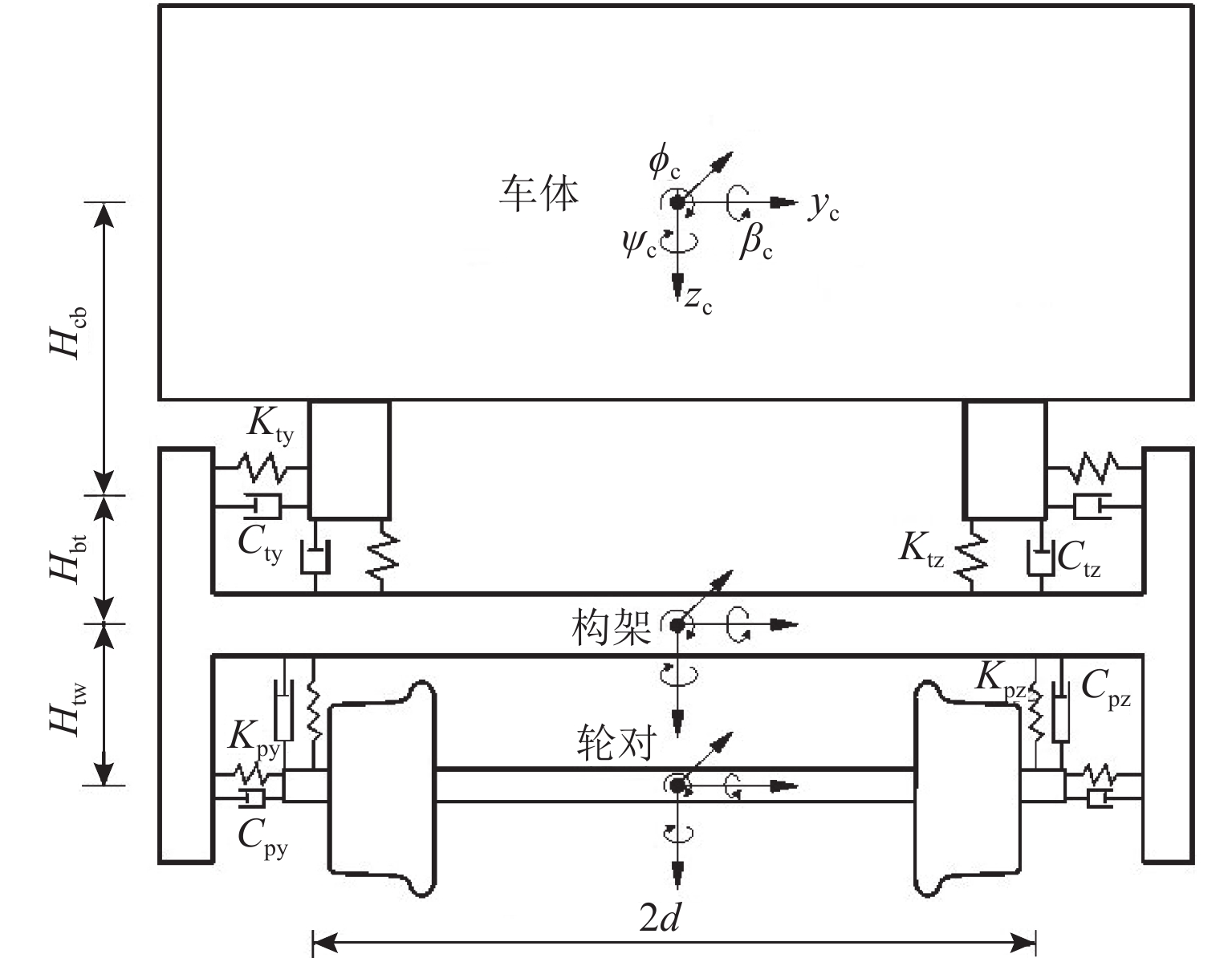
 下载:
下载:
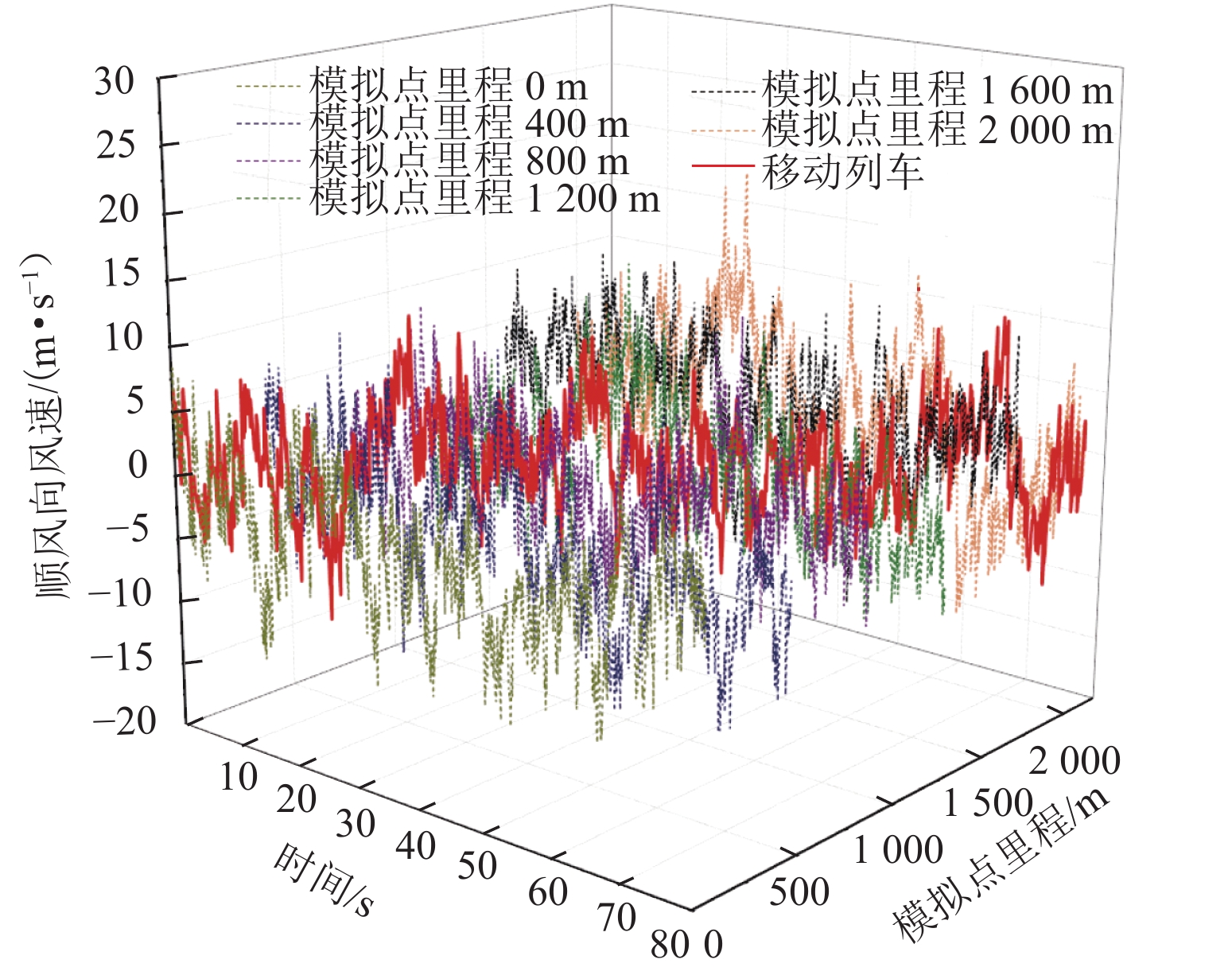
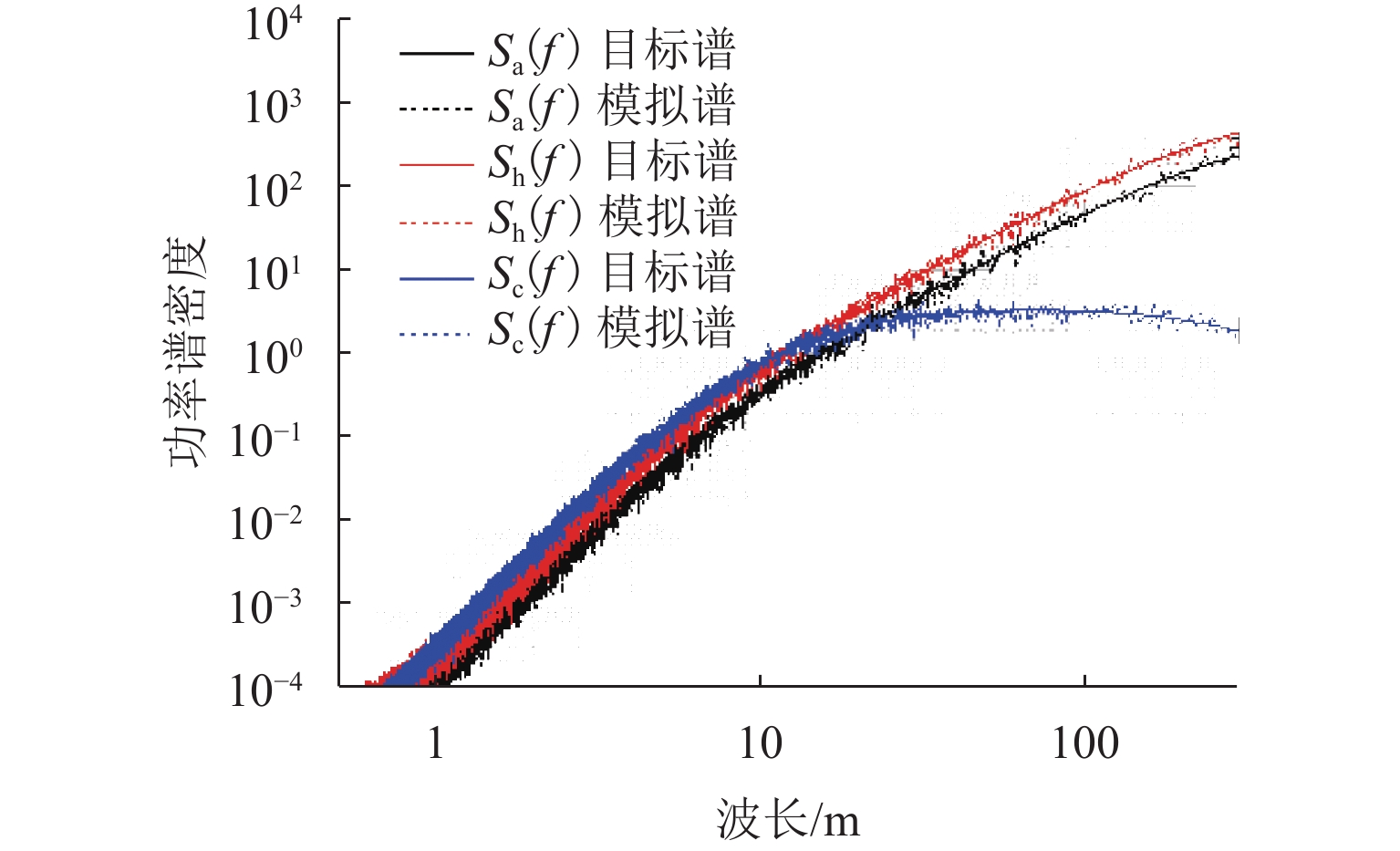
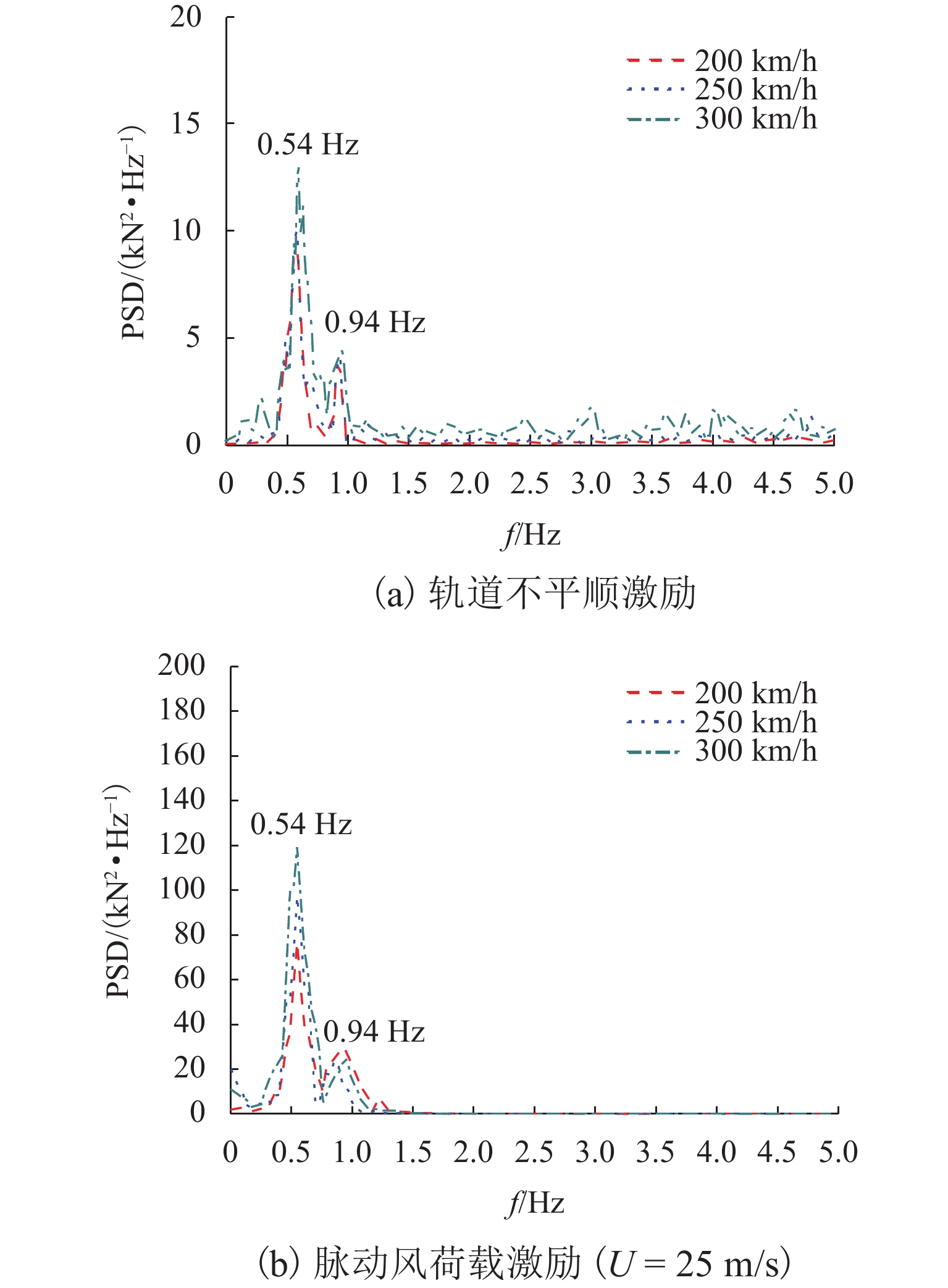
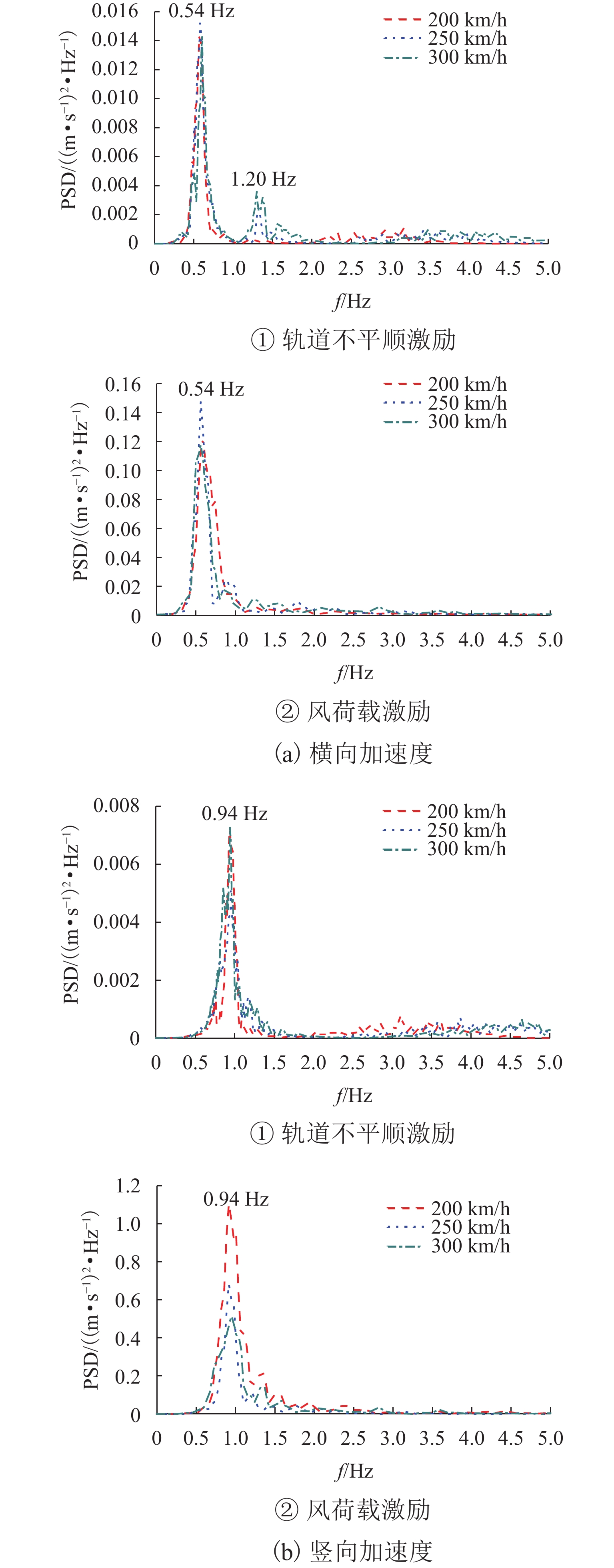
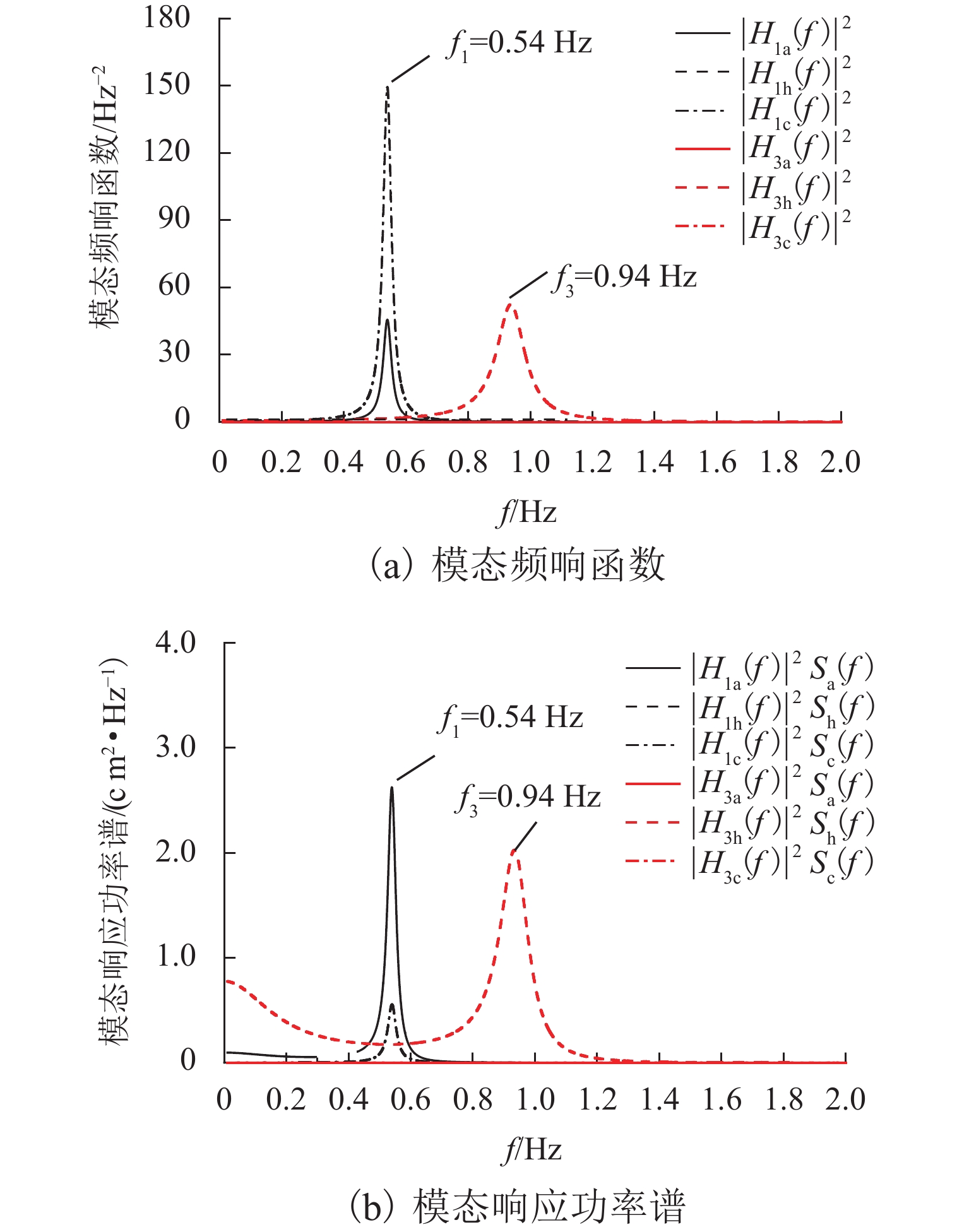
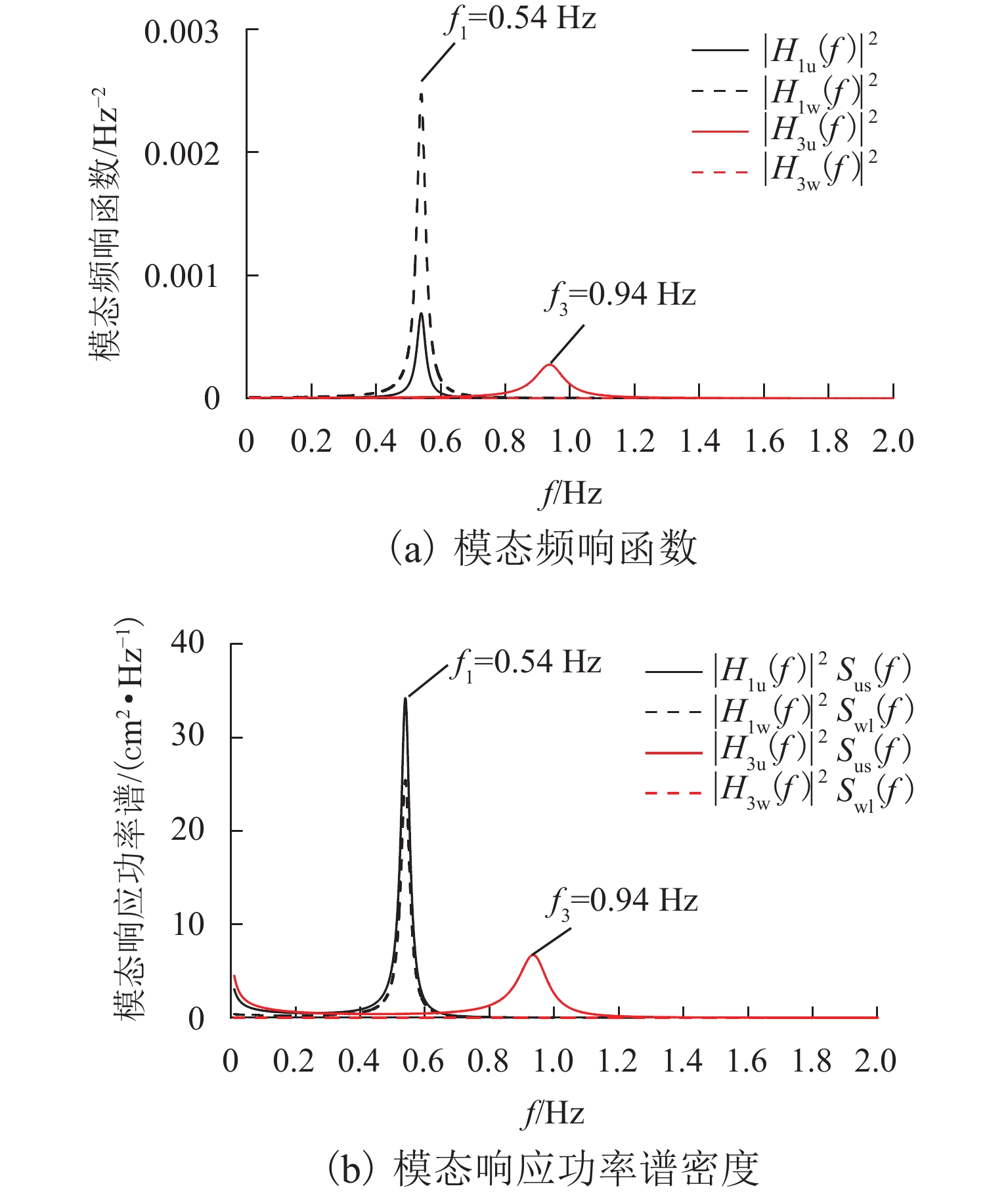
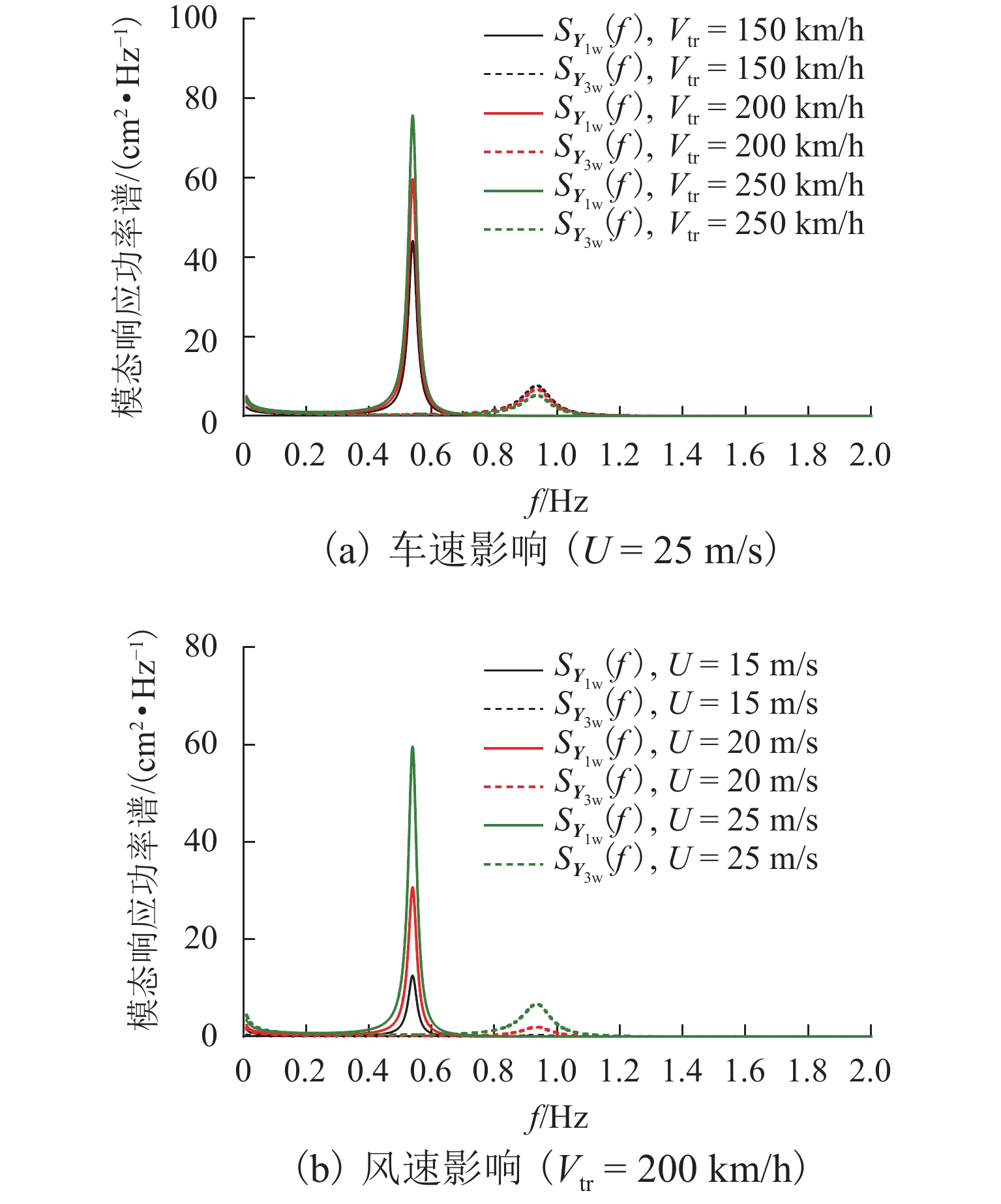
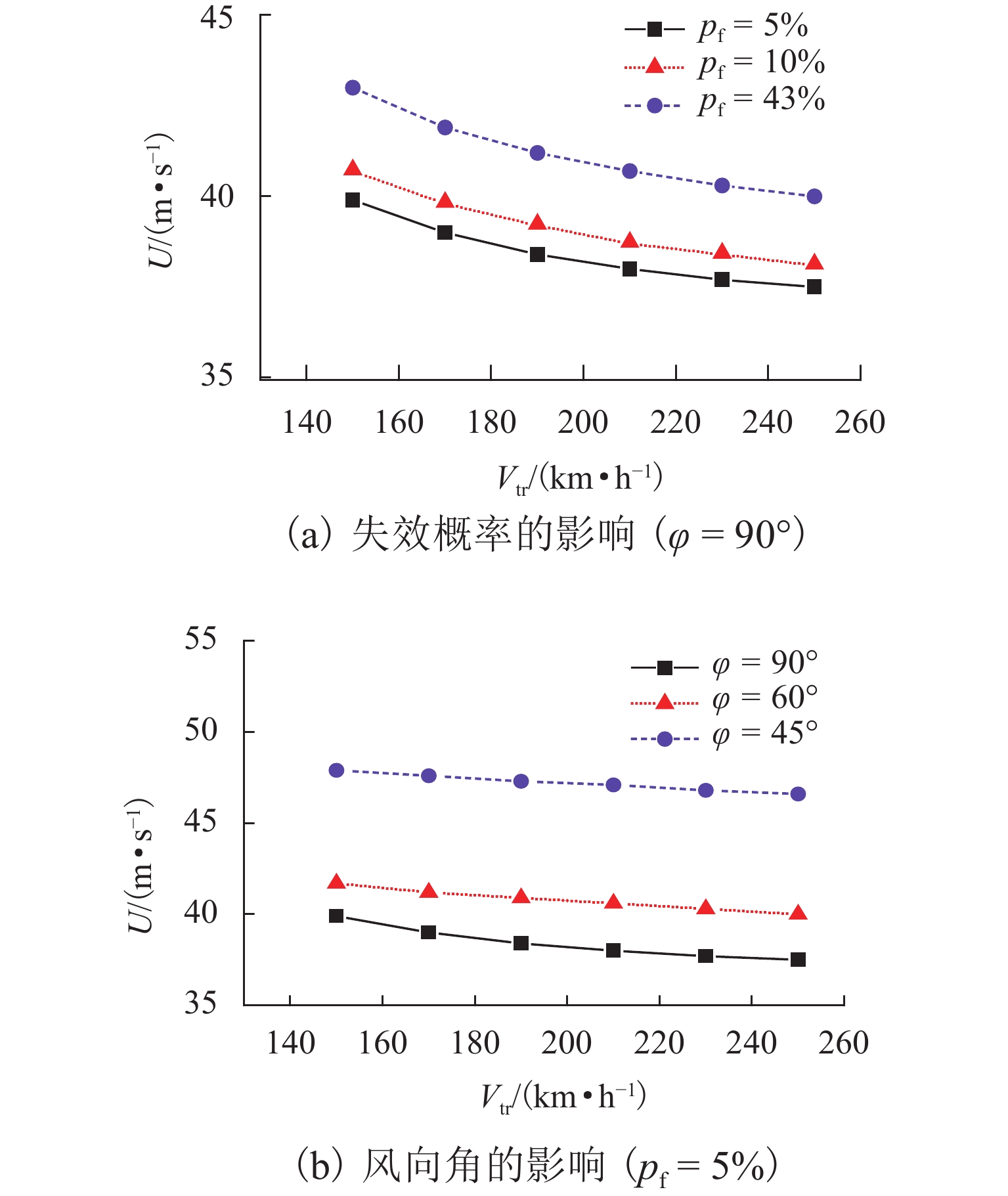
 百度学术
百度学术









